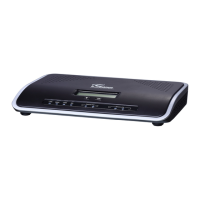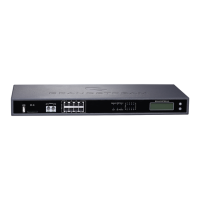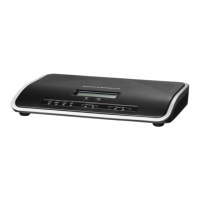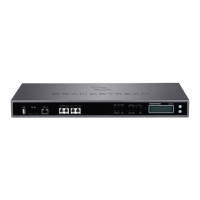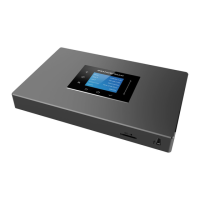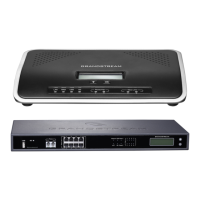UCM6100 Series User Manual
Version 1.0.18.13
Configure the IP address or URL for the VoIP provider’s server of the trunk.
Configure the SIP transport protocol to be used in this trunk. The default setting is
"UDP".
• UDP
• TCP
• TLS
Keep the CID from the inbound call when dialing out. This setting will override
“Keep Trunk CID” option. Please make sure that the peer PBX at the other side
supports to match user entry using “username” field from authentication line.
If enabled, the trunk CID will not be overridden by extension’s CID when the
extension has CID configured. The default setting is “No”.
Turn on this option when the PBX is using public IP and communicating with
devices behind NAT. If there is one-way audio issue, usually it’s related to NAT
configuration or SIP/RTP port configuration on the firewall.
If selected, the trunk will be disabled.
Note:
If a current SIP trunk is disabled, UCM will send UNREGISTER message
(REGISTER message with expires=0) to the SIP provider.
If the trunk has an assigned PSTN telephone number, this field should be set to
"User=Phone". Then a "User=Phone" parameter will be attached to the Request-
Line and TO header in the SIP request to indicate the E.164 number. If set to
"Enable", "Tel:" will be used instead of "SIP:" in the SIP request. The default setting
is disabled.
Select whether the trunk needs to register on the external server or not when
"Register SIP Trunk" type is selected. The default setting is No.
Allow outgoing calls
if registration failure
If enabled outgoing calls even if the registration to this trunk fail will still be able to
go through.
Note that if we uncheck “Need Registration” option, this option will be ignored.
Configure the new name of the caller when the extension has no CallerID Name
configured.
Configure the actual domain name where the extension comes from. This can be
used to override the “From” Header.
For example, "trunk.UCM6100.provider.com" is the From Domain in From Header:
sip:1234567@trunk.UCM6100.provider.com.
Configure the actual user name of the extension. This can be used to override the
“From” Header. There are cases where there is a single ID for registration (single
trunk) with multiple DIDs.
For example, "1234567" is the From User in From Header:
sip:1234567@trunk.UCM6100.provider.com.
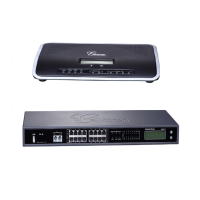
